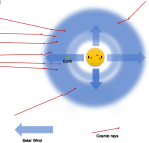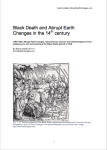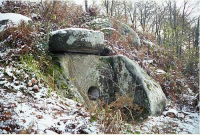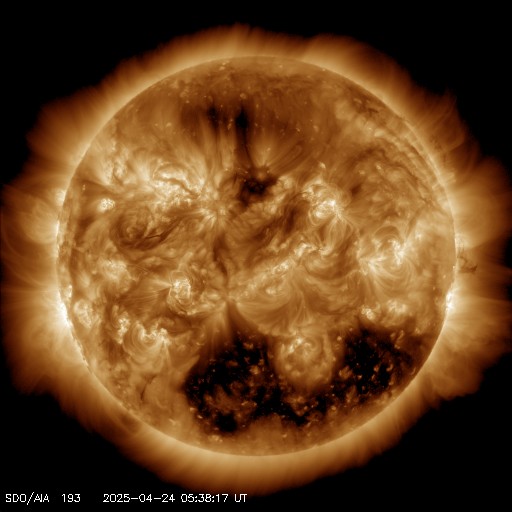Comment AEC: The myths of Phaethon describes how the Sun ran off its course, came too close to the Earth and thus burnt the land. From all we know, such major, fast changes in Sun/ Earth’s motion are impossible. On the other hand, we have many modern day accounts of fireball running across the sky that were so bright that eye witnesses confused the entering meteor with the sun. Many of the witnesses to the Tunguska Meteor Explosion in Siberia in 1908 said they thought the sun had gone astray rushing across the sky, shortly after this, the explosion and fires destroyed an 40km-diameter area of forest. A recent meteor filmed over Finland “turned the night into day” and “shook the ground”, without causing damage on the surface. It is easy to see how a large passing object with a massive debit field or dust trail can caused widespread (regional or continental) fires, and the survivors are likely to believe it was the sun, especially in the case of a night time encounter. Thus, the Phaethon myth is almost certainly based on a true story. There is no indication that the soon to take place asteroid fly-by will cause any disturbances on Earth. The riddle here is why NASA would have named (in 1985) a harmless asteroid – which would at the very most caused a display of lovely shooting stars – after an ancient destructive event, which was locally perceived as the end of the world and in many cases, it was the end of their world.
On December 16, 2017, the modern day asteroid called Phaethon will approach within 0.069 au of Earth (27 lunar distances).
Here is the recent story by Metro.co.uk
It’s named after an ancient god who nearly wiped out humanity – so you be forgiven for feeling pretty nervous to hear about a gigantic three-mile-wide asteroid that’s set to zoom past Earth in December. A gigantic space rock called 3200 Phaethon is due to brush ‘quite close’ to our planet on December 17, Russian astronomers have revealed. This huge asteroid is thought to cause the beautiful Geminids meteor shower which will take place between December 13 and 14 as hundreds of bright meteors illuminate the night sky as they burn up in Earth’s atmosphere. But NASA has also described it as a ‘potentially hazardous asteroid whose path misses Earth’s orbit by only 2 million miles‘ – which is incredibly close in galactic terms. It’s about half the size of Chicxulub, the rock which wiped out the dinosaurs, and has a very unusual orbit which causes it to pass closer to the sun than any other named asteroid.

Phaethon. Image: metoe.co.uk
Astronomers from the Immanuel Kant Baltic Federal University have just published a video which tracks the path of Phaethon. In a statement, the uni wrote: ‘Apparently, this asteroid was once a much bigger object, but its many approaches to the Sun have caused it to crumble into smaller pieces which eventually formed this meteor shower. ‘If so, the asteroid itself could be the residue of a comet nucleus. The asteroid’s extremely elongated orbit, thanks to which it sometimes gets to the Sun closer than Mercury and it sometimes moves away farther than Mars, is another argument in favour of this theory.’ The space rock is named after Phaethon, the son of the Greek sun god Helios. Ancient myths told the story of how this rather insecure-sounding young god was challenged to prove he was related to Helios, who was said to pull the sun across the sky.
To prove his divine provenance, Phaethon decided to have a go in his dad’s chariot and was unable to control the horses, who then ran wild across the sky dragging the hot sun with them. Humanity was almost destroyed in the subsequent chaos, which scorched the Earth, burned vast amounts of vegetation and created the great deserts of Africa. The Earth was only spared when Zeus blasted the horses with a thunderbolt, killing Phaethon in the process. Here’s what the Greek philosopher Plato wrote about the myth: ‘There have been, and will be again, many destructions of mankind arising out of many causes; the greatest have been brought about by the agencies of fire and water, and other lesser ones by innumerable other causes. ‘There is a story that even you [Greeks] have preserved, that once upon a time, Phaethon, the son of Helios, having yoked the steeds in his father’s chariot, because he was not able to drive them in the path of his father, burnt up all that was upon the earth, and was himself destroyed by a thunderbolt.
Now this has the form of a myth, but really signifies a declination of the bodies moving in the heavens around the earth, and a great conflagration of things upon the earth, which recurs after long intervals.’ We’re pleased to report that the real-life Phaethon will not plough into Earth and so our species will live to fight another day.
Categories: Astronomy, Electric Environment, Meteorites, Recently













![Kp-Index [0-3] Green - Stable/Calm Magnetosphere. [4] Yellow - Unstable Magnetosphere. [5+] Red - Geomagnetic Storm Conditions](https://firebasestorage.googleapis.com/v0/b/carrington-9.appspot.com/o/spaceWeatherNews%2FkpChart.png?alt=media)







Yes, hail and hail of stones did change the course of history. As for my web site banner that’s a boulder in the swiss alps. I keep findings these cup and ring- marks, also on dolmens and menhirs in the region. I’m working on a text where I postulate that most of there are not from kinetic impacts but from electric discharges (likely in conjunction with hailstones. sequel to my Dolmen text on the front page).
LikeLike
My apologies for posting so many comments in the one thread here but i am not o savvy with computing. I just want to post my Facebook website because I have a picture, a screenshot of the real Noah’s Ark shot on video in 1959 accidentally, by an American co pilot in a US air force F100 jet while doing aerial surveillance for the Turkish army. The F100 was flying around the larger of the two Mount Ararats in Turkey where the bible says the ark landed. This picture confirms the shape of he ark and the landing place. In the video of the interview with the copilot Gregor Schwinghammer, he explains how the video includes the ark. I watched the video and took the screenshot out of that video and posted the screenshot as my Facebook webpage banner. Noah’s Ark is most certainly real and there it is, atop Mount Ararat like the bible says.
LikeLike
I like your website banner. It shows what the hail the weight of a talent can do to stone. Imagine what the hail did to the remains of the 300,000 man army that went to attack Jerusalem when Joshua was King of Israel. The remains of that army, 185,000 men were killed by hail from heaven. The medieval pictures you are showing show the effect of that hail from heaven on the flesh of men. Men are consumed by it. Amen.
LikeLiked by 1 person
Well, we are expecting it aren’t we?
LikeLiked by 1 person